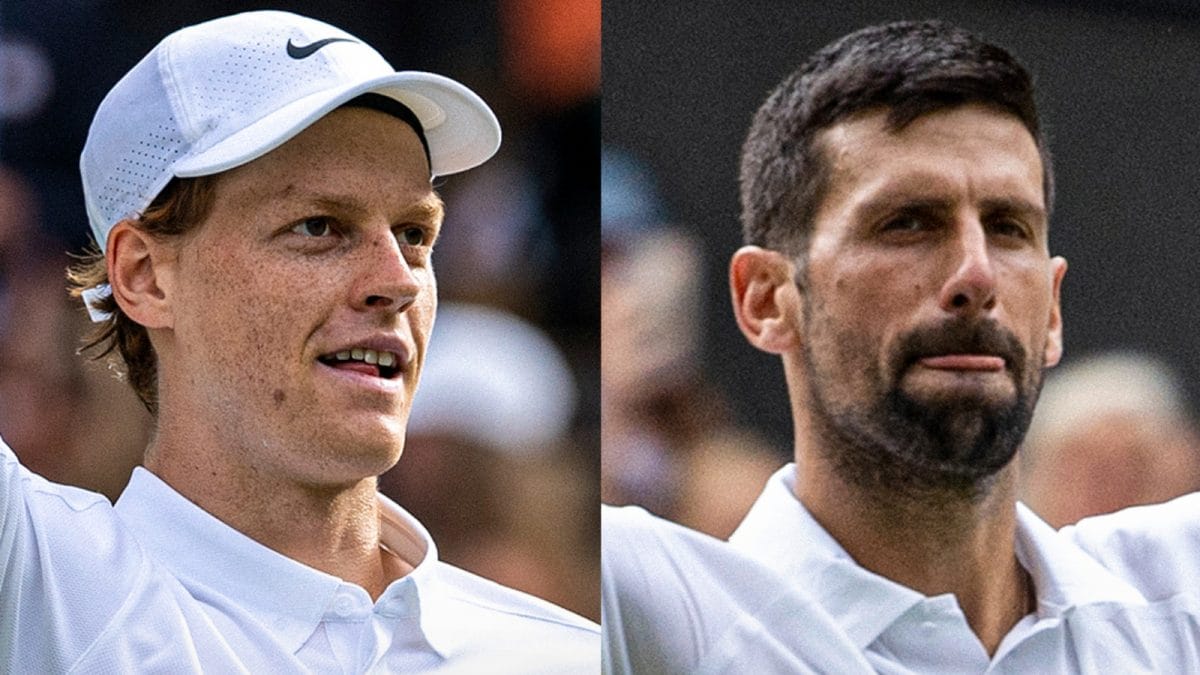When the AirAsia aircraft emblazoned with superstar Rajinikanth’s face took flight as part of the ‘Kabali’ movie promotion back in 2016, it wasn’t crafted in a film studio but painted by hand at Hyderabad’s Rajiv Gandhi International Airport. The same team gave FlyBeond’s aircraft its sleek metallic look, layering copper-toned paint infused with gold-dust mica — a livery that shimmered like no other.
Tucked away in a hangar on the edge of the airport, GMR Aero Technic is doing more than just routine maintenance. It’s redefining what aircraft transformation looks like, one flawless coat at a time.
“Aircraft painting is not like painting cars or hoardings; here there is no room for error,” says Mohammed Sadiq (name changed), a painter at the facility. “Every coat, from the base to the clear finish, must be applied with precision because it affects the aircraft’s aerodynamics and fuel efficiency. We were trained in everything, from handling paint guns and surface prep to how to safely move on top of the aircraft. It is a critical job that requires both skill and focus,” he adds.
Nine aircraft, in various states of transformation, sit beneath high bay lights, some stripped to their bare metal, and others mid-way through a makeover. This is not just mechanical upkeep, this is where global airlines send their jets to be reimagined structurally, visually and functionally. It is a facility that has turned Hyderabad into a serious contender on the global aviation map.
A canvas of innovation
“This highly regulated process blends aerodynamics, weight optimisation and visual branding. Every coat matters. Too thick and it adds weight; too rough and it impacts drag. Both affect fuel efficiency and emissions,” explains Ashok Gopinath, president and accountable manager of GMR Aero Technic.
Each livery painting takes between seven and 11 days, with over half that time spent on surface preparation. GMR employs around 30 skilled professionals per aircraft paint job, each trained not just in technical standards but in visual artistry. Many come from commercial painting backgrounds, automobiles, hoardings and even signages, and are put through a 6-8 month customised aviation painting programme, including training from global paint manufacturers like PPG, Mankiewicz and AkzoNobel.

The paint shop at RGIA where aircraft components receive fresh coats. | Photo Credit: SIDDHANT THAKUR
Painting is typically done between midnight and 6 a.m., when ambient temperatures are optimal and the facility is quieter. Hyderabad’s moderate weather gives it an edge over cities like Delhi, where extreme summer or winter temperatures can delay paint cycles. A full repaint typically costs around $200,000 to $250,000, depending on the complexity, materials and branding requirements. “Each aircraft that leaves early because we save a day on painting saves the airline about $30,000. Our hangar is fully booked till mid-2026,” Mr Gpoinath adds.
Unlike stickers or placards that can peel off mid-air, GMR hand-paints intricate liveries, including the now-iconic Air India Express tails, each representing a different Indian art form. “Each tail is unique. The challenge is to maintain consistency in quality and colour across a 100-foot aircraft surface, often under tight timelines,” he explains.
“Most of our work happens at night when temperatures are stable. We wear full safety gear and make sure all tools are grounded, even static electricity can be dangerous in this job. Painting a plane is a team effort. The aircraft is divided section by section and each painter knows their part, whether it is the tail, body or wings. We take a few steps back, check every curve and joint carefully, and make sure the finish is perfect before we move on,” says Ajit Kumar (name changed), another painter on the team.
Maintenance hub to MRO powerhouse
Founded in 2011, GMR Aero Technic began by focusing on airframe maintenance, the largest and most infrastructure-heavy vertical within the MRO (Maintenance, Repair, and Overhaul) ecosystem. Today, it is India’s largest independent MRO and a full-service provider offering everything from end-of-lease checks and C-checks to cabin upgrades and aircraft modifications.
With 9+1 operational lines, the facility can handle up to 10 aircraft simultaneously. Roughly 70% of its business comes from international clients, including Kuwait’s Jazeera Airways, FlyDubai and Southeast Asian carriers. Domestic clients include IndiGo, Air India Express and SpiceJet.

A Jazeera Airways Airbus A320-200 aircraft sits in one of the nine hangars at GMR Maintenance, Repair and Overhaul (MRO) facility at Hyderabad’s Rajiv Gandhi International Airport. | Photo Credit: SIDDHANT THAKUR
What gives GMR an edge is its extensive regulatory clearances, not just from India’s Directorate General of Civil Aviation (DGCA), but also from global aviation authorities like the European Union Aviation Safety Agency (EASA), the US Federal Aviation Administration, and over 30 other countries. This level of accreditation places it in competition with the likes of Turkish Technic (Istanbul), ST Engineering (Singapore) and Joramco (Jordan).
Ecosystem the Singapore way
GMR’s ambition is not just limited to airframe work or paint. It envisions Hyderabad as South Asia’s one-stop MRO ecosystem, akin to Singapore’s world-class aerospace hub.
To this end, the company has tied up with global players like Spirit AeroSystems (for engine nacelle repairs), Safran (for DSL booths) and Liebherr (for heat exchangers). It has also launched an aviation academy offering DGCA and EASA-approved training programmes, grooming the next generation of MRO professionals.
A future in wide bodies
The next major leap is already on the drawing board: by 2027, GMR plans to add a wide-body aircraft paint hangar, which will allow it to handle long-haul jets like the Boeing 777 aircraft that Indian airlines like Air India currently send abroad, often to the US, for painting. “That work will be done here in Hyderabad,” says Mr.Gopinath.
As the aviation world grows, the demand for precision maintenance and visual branding is skyrocketing. The next time a plane takes to the skies gleaming with a new coat, chances are that the shimmer was born in a quiet hangar in Hyderabad.



.png)
.png)
.png)
















 11 hours ago
7
11 hours ago
7







 English (US) ·
English (US) ·